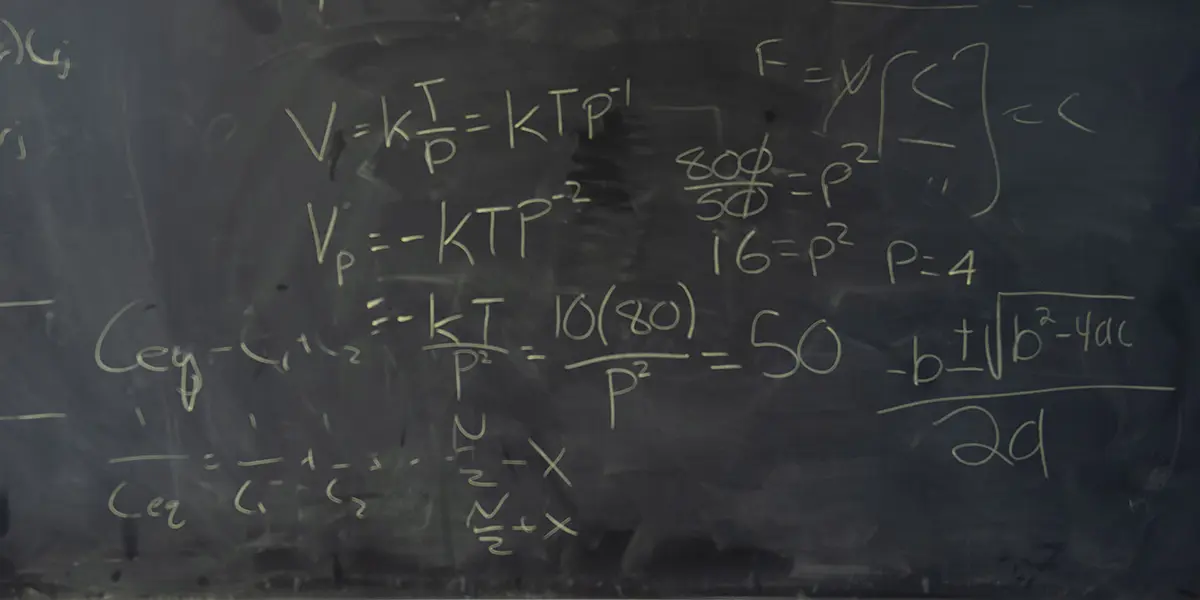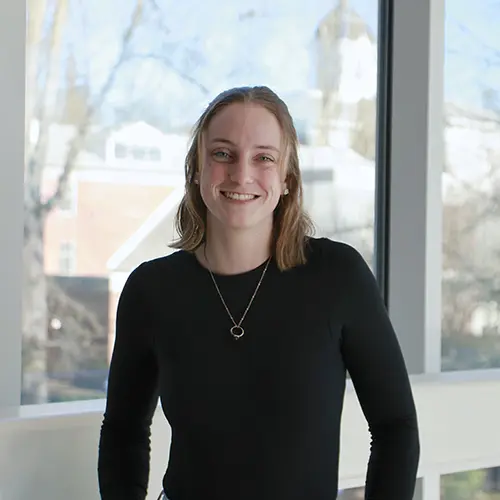
Mikaila Saathoff '25
Exploring the secrets of swarms


Mikaila Saathoff '25

Mikaila Saathoff ’25, a math and physics double major from Philomath, took her passion for science to the next level through a captivating research project on insect swarms. Under the guidance of Joelle Murray, Mikaila, along with fellow student Lucas Pinard, explored how groups of insects work together, using Python to model and analyze swarm behavior.
The impact of understanding these group behaviors has application well beyond the lab.
“Swarms can be heavily related to crowds and crowd control. If we understand the rules regulating insect swarms, we can apply these rules and concepts to crowds of people,” said Joelle, an associate professor in the Department of Physics. “We can then determine ways to disrupt crowds to make situations with mass numbers of people safer.”
For Mikaila, her interest in research came from the desire to utilize her knowledge in a more open-ended manner than the classroom.
“Doing research is important for undergraduates because often it's the first time they see what doing science is really like,” Joelle said. “In classes, they mostly see structured lectures, activities or labs where everything is largely known by their professors. Research is the first place they see just how much we, as scientists, don't know and experience the thrill of making progress towards understanding anyway.”
And at Linfield, students can receive special funding to support their research interests. In fact, roughly 33% of Linfield’s undergraduate students work on research projects with a faculty member during their college career.
Both Lucas and Mikaila played key roles in this research; however, each tackled different parts of the project. They met regularly to discuss accomplishments, share insights and develop ongoing plans.
“My research has been focusing on one of the models that uses a gravity-like force and repulsion force to model the swarms,” Mikaila said. “This model is based on the work of Dan Gorbonos and colleagues. I have been working on adding an elastic potential force to model the elongation of the swarm along the vertical axis, which is closer to observed laboratory swarms.”
While the research project was collaborative, Mikaila and Lucas worked on separate aspects of the project and utilized different models in their work.
“The research was more individualized than I anticipated,” she said. “But rather than inhibiting me, it allowed me to understand the code, and Python, in general, as well as the bigger picture of this research.”
Together, the pair refined these two models, which enabled simultaneous operation, more uniform comparisons and new information to emerge.
Mikaila’s research has continued throughout the school year and is now part of her senior thesis.
“One of the main tasks I accomplished over the summer was standardizing the code such that the models can be directly compared. This code has become the new code that I use for my research,” she said. “The research that I did in the fall was to add another force to one of the models. I added this force directly in the code of the combined models, and I can now use this code to run any variation of each model.”
She is also preparing to present a poster of her work at the American Physical Society (APS) meeting for undergraduates in the spring. APS gatherings highlight cutting-edge research in astrophysics, particle physics and nuclear physics and connect students with leading researchers and physicists.
“I am nervous about presenting and talking to a bunch of new people, but I'd be lying if I said I wasn't also nervous for the responses I might receive,” she said. “I would love to use the opportunity to improve my research.”
After graduating from Linfield, Mikaila plans to attend graduate school.
“For graduate studies, I am mostly interested in astrophysics,” she said. “Projects in this area of physics tend to use computational techniques in research, so I believe my research [at Linfield] will be especially beneficial in astrophysics because I am already familiar with Python and computational modeling.”
But, it’s not just science that Mikaila learned along the way.
“This experience has certainly driven some physics concepts into my brain, like the center of mass of a multi-particle system and the relationship between force and potential energy,” Mikaila said. “It has also taught me how to work independently outside of a classical academic environment. I have also learned more about my capabilities and how to best use the resources available to me.”